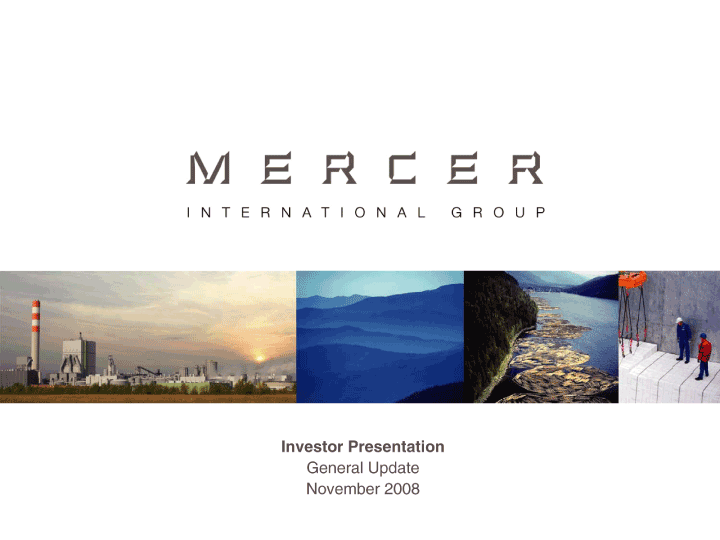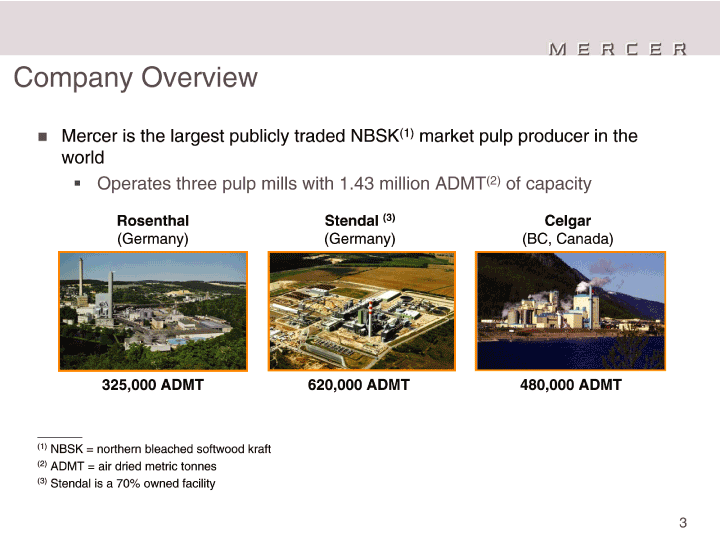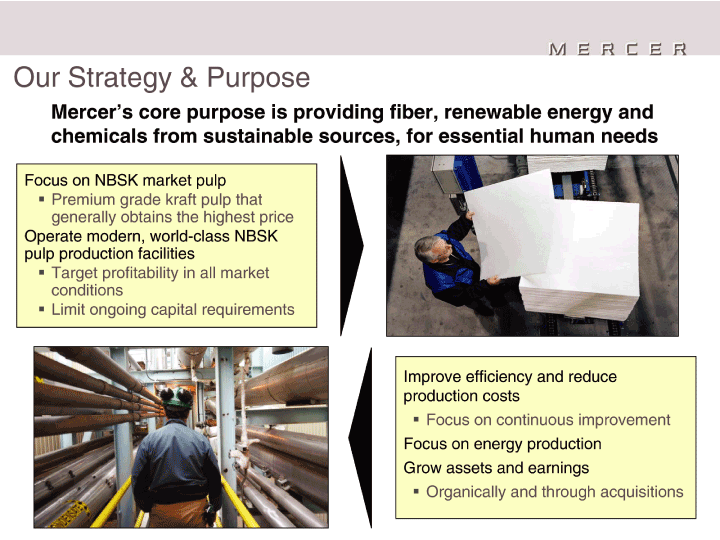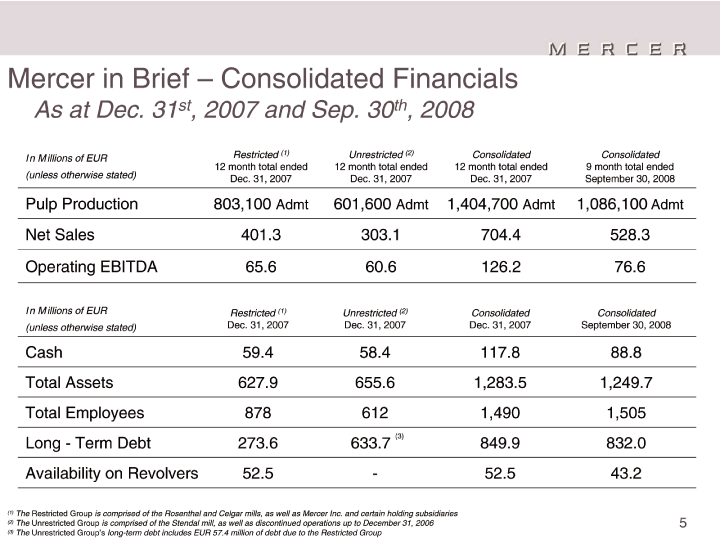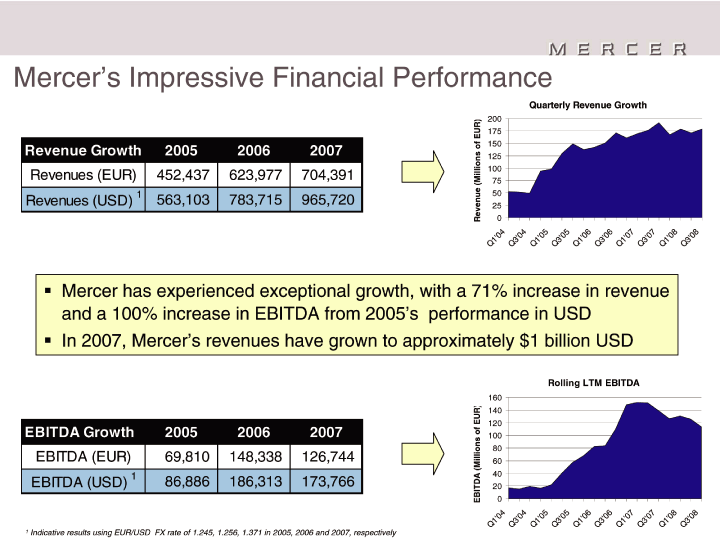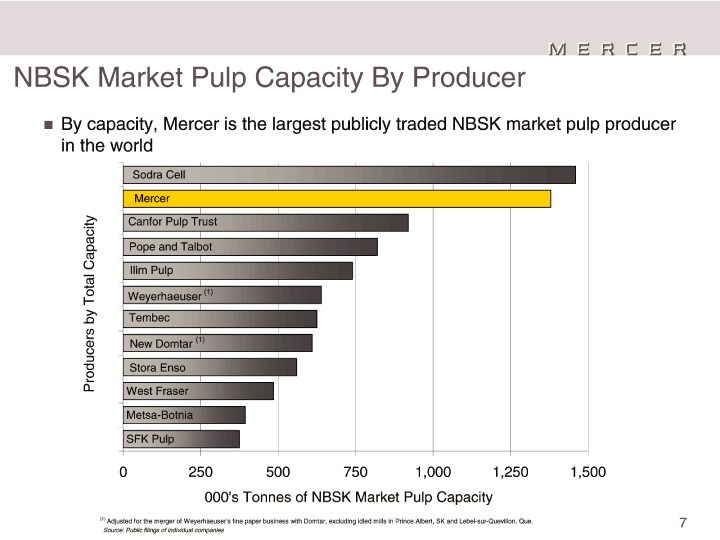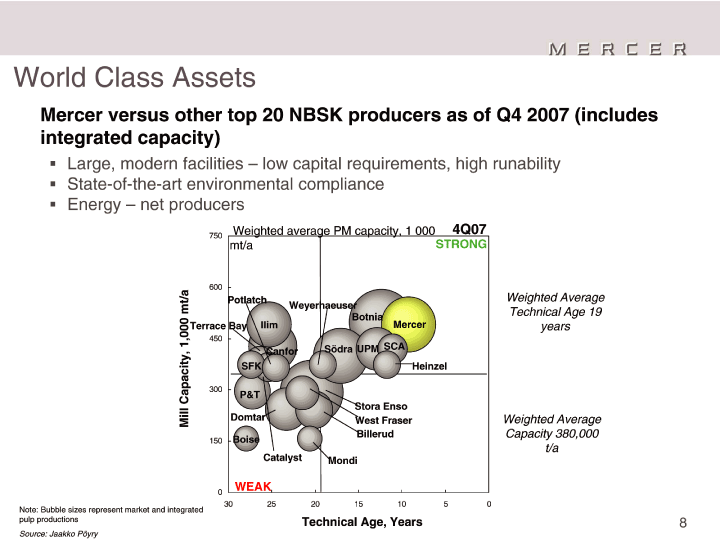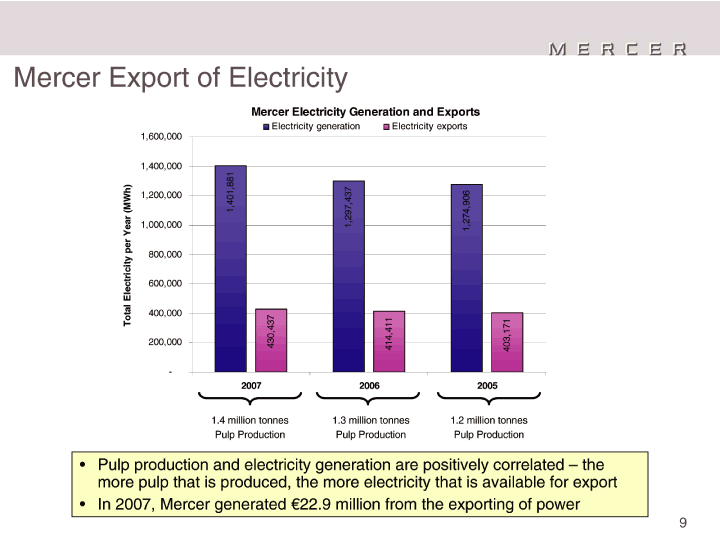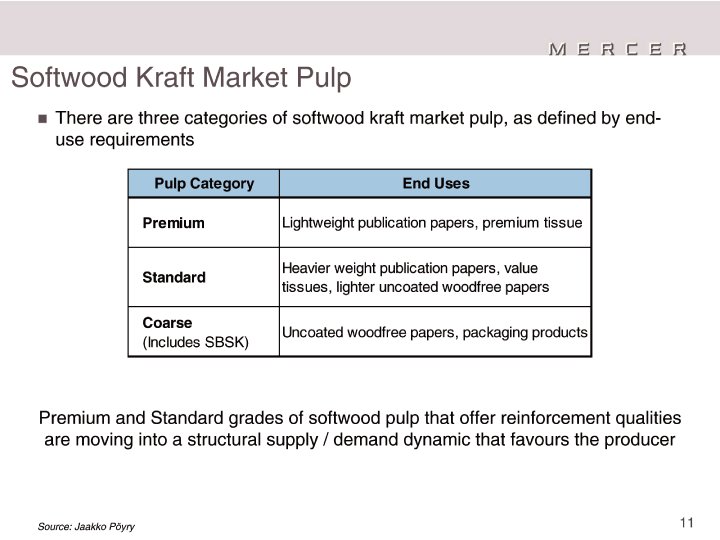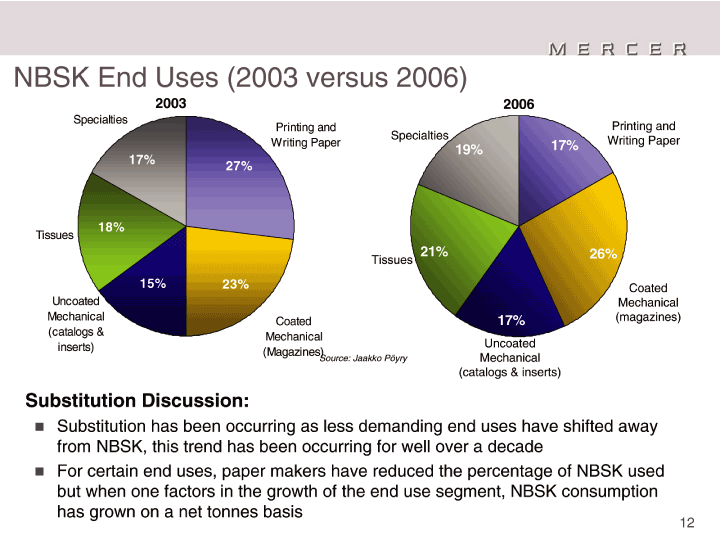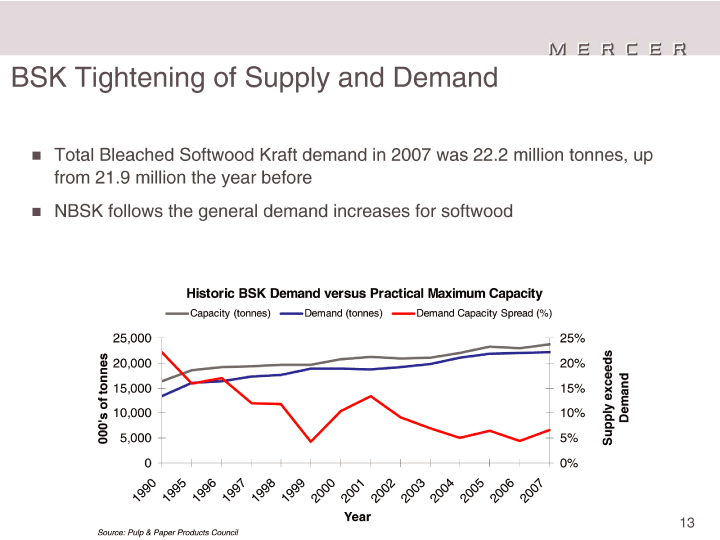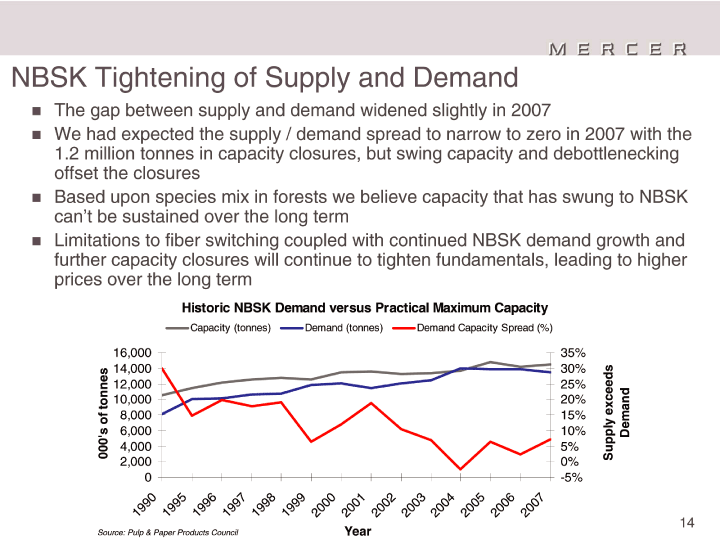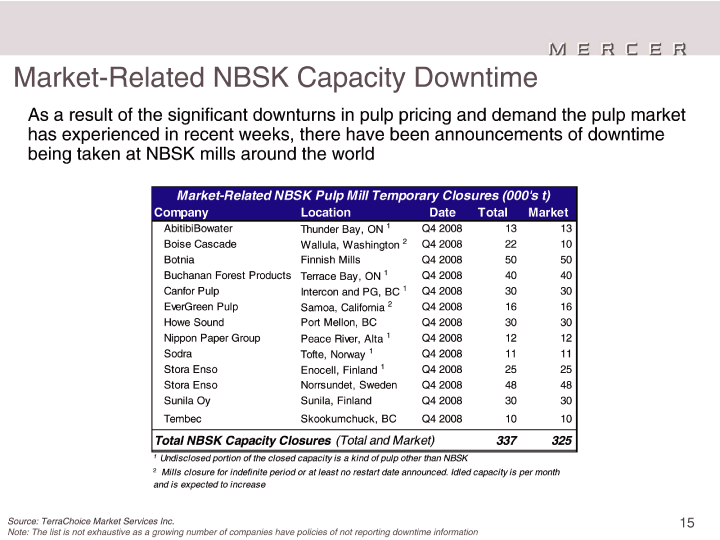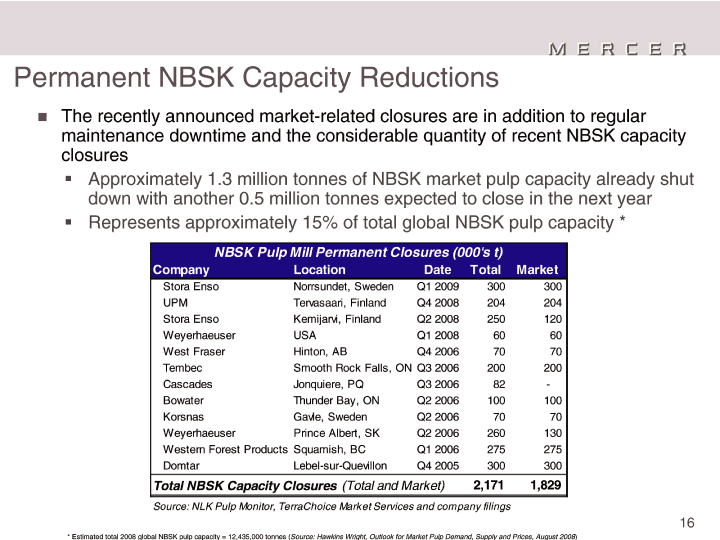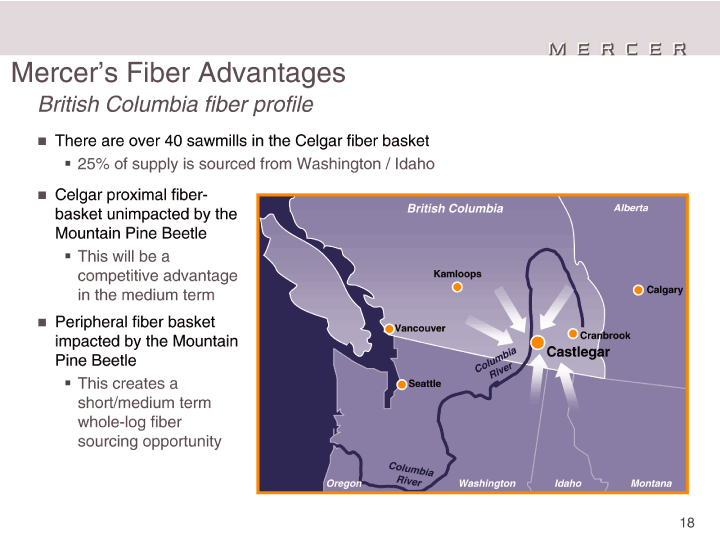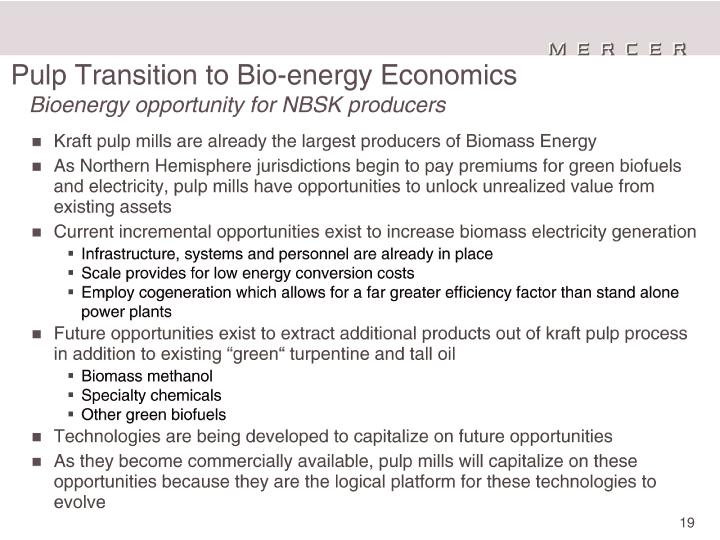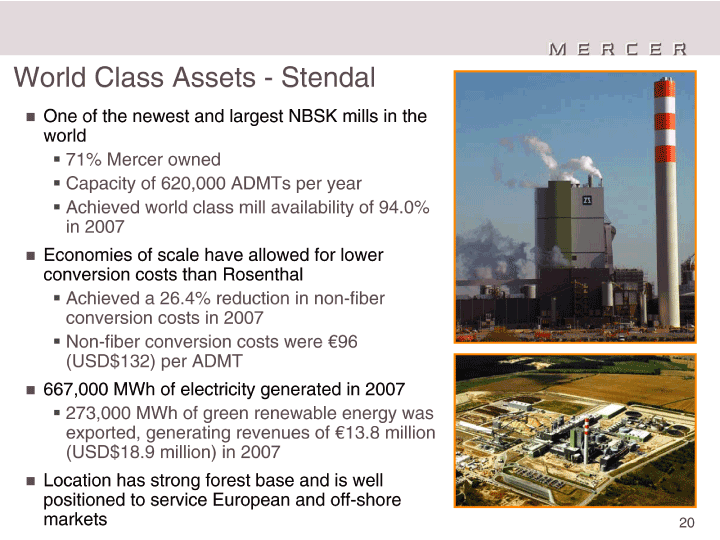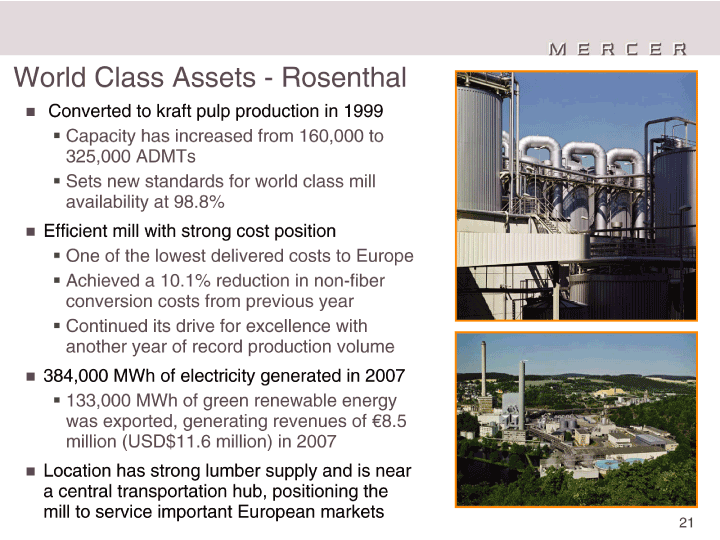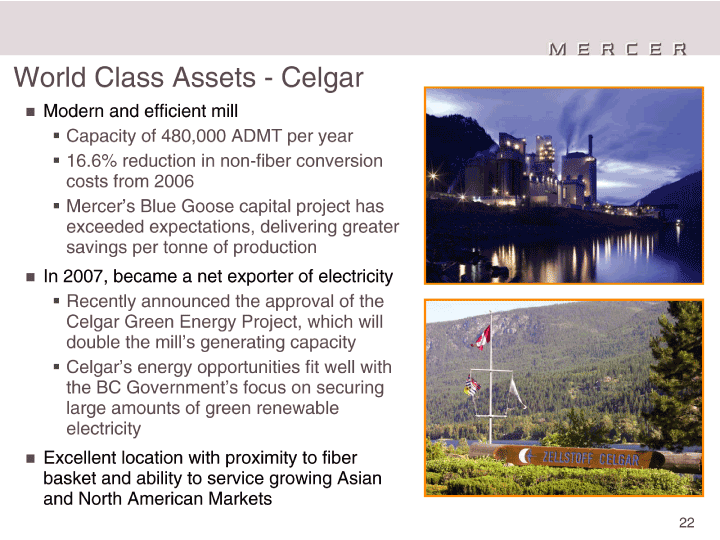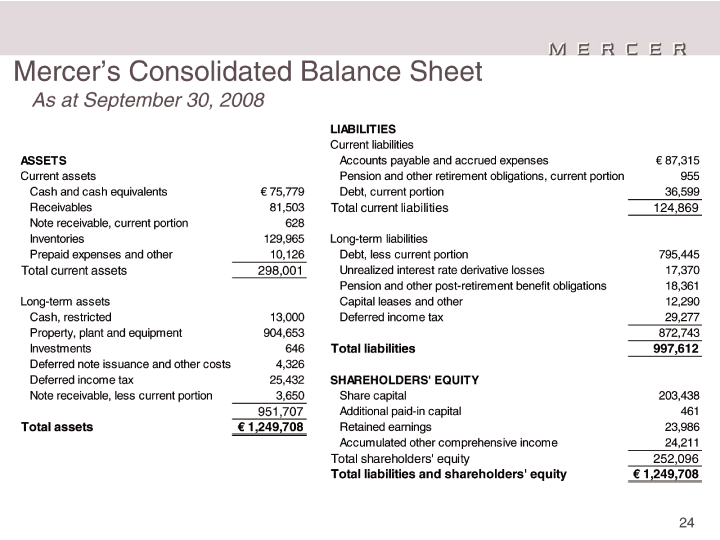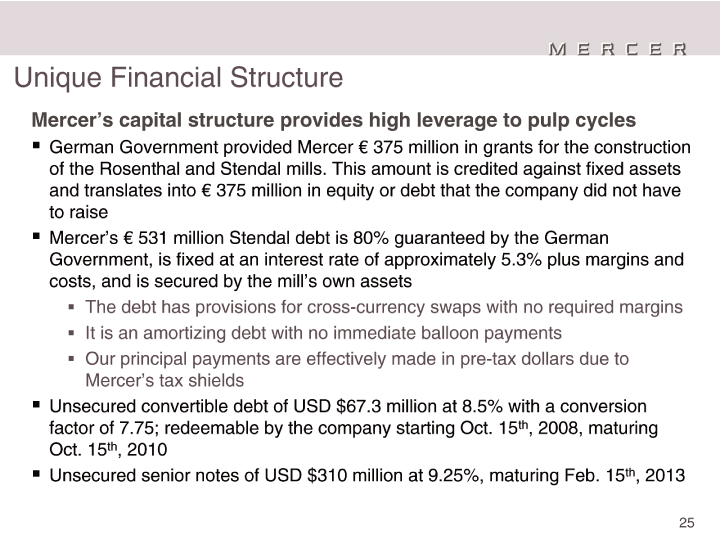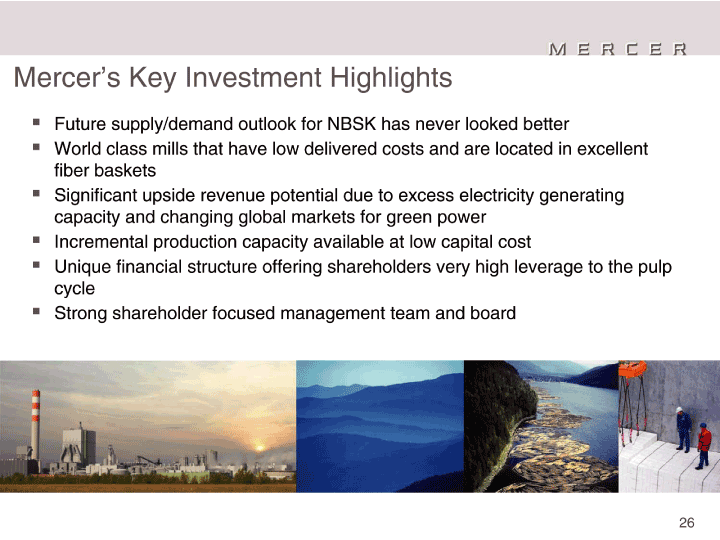Free signup for more
- Track your favorite companies
- Receive email alerts for new filings
- Personalized dashboard of news and more
- Access all data and search results
Filing tables
Filing exhibits
MERC similar filings
- 12 Feb 09 Mercer International Inc. Reports 2008 Fourth Quarter and Year End Results
- 9 Feb 09 Mercer International Inc. Announces Successful Agreement to Amend Its Stendal Mill Loan Facility
- 3 Feb 09 Entry into a Material Definitive Agreement
- 7 Nov 08 Regulation FD Disclosure
- 28 Oct 08 Mercer International Inc. Reports 2008 Third Quarter Results
- 12 Sep 08 Regulation FD Disclosure
- 31 Jul 08 Mercer International Inc. Reports 2008 Second Quarter Results
Filing view
External links
